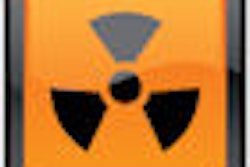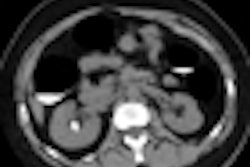
The Image Gently campaign reached its second birthday last month, and while no official parties were held, there are plenty of reasons for children to celebrate. Image Gently has evolved from a modest, volunteer-driven initiative focused on North America into a global movement to raise awareness of radiation dose.
The Alliance for Radiation Safety in Pediatric Imaging, the organization responsible for implementing the Image Gently campaign, started with four founding professional associations with predominantly U.S. and Canadian constituencies. Members now include an international network of 54 organizations representing more than 600,000 healthcare professionals working throughout the world.
Image Gently is working to make both medical professionals and parents aware that any radiation dose exposure from a diagnostic imaging exam may be unnecessary exposure for a child. Also, not only should radiology procedures be ordered conservatively based on clinical appropriateness criteria, the procedures should use a radiation dose as low as diagnostically permissible.
What's happened over the past 12 months?
At the end of January 2010, the Image Gently Web site has received 226,000 visits, its recommended pediatric CT protocols have been downloaded 15,800 times, and 3,855 medical professionals have taken the Image Gently pledge.
In addition, the scope of Image Gently has expanded to include fluoroscopy and digital x-ray, including both flat-panel digital radiography and computed radiography. Fluoroscopy is the third-largest radiation dose contributor in diagnostic imaging, while radiography is the most common medical imaging procedure by exam volume.
The Step Lightly fluoroscopy campaign was launched in August 2009, with the objective of ensuring that medical protocols for performing interventional procedures keep pace with advancing technology and the increasing use of these techniques. Its basic message is to "child-size" exam protocols, to step lightly on the fluoroscopy pedal, and to consider using ultrasound or MRI guidance rather than radiation-based imaging.
Alliance members developed online teaching materials and checklists for use by interventional radiologists, medical physicists, radiologic technologists, nurses, and anesthesiologists, as well as a brochure describing interventional radiology procedures for patients and parents. All material is available free of charge.
Summit on computed/digital radiography
In another step in Image Gently's expansion, on February 4 a long-planned summit on computed radiography (CR) and digital radiography (DR) was held at the Mallinckrodt Institute of Radiology at Washington University in St. Louis. The meeting provided a forum to discuss the expanded use of DR in pediatric examinations and to develop guidelines to increase safety measures.
This summit produced a promise by the American College of Radiology (ACR) to develop a national DR dose registry in the U.S., along with the development a unified international standard for CR and DR exposure indexes by the American Association of Physicists in Medicine (AAPM) of College Park, MD, and the International Electrotechnical Commission of Geneva.
In addition, the alliance has formed a work group to develop new, more comprehensive, educational training materials for radiologic technologists.
Presentation by Physics Work Group
The Image Gently Pediatric CT Physics Work Group, formed in August 2008, used the venue of the AAPM annual meeting held in July 2009 to formally present a method the group had developed to adjust standard CT dose reports to account for differences in patient size for head, chest, and abdominal CT scans. The method was designed to quantify body attenuation as a function of patient size dose metric for a pediatric patient, and it had been officially approved by the AAPM in November 2008, according to Keith Strauss, Ph.D., chair of the work group and a medical physicist at Children's Hospital Boston.
CT scanners report dose in accordance with international standards on either a 16-cm diameter head or 32-cm diameter body phantom. The standard dose reports measure the dose output of a CT scanner, and while they are reasonable to use for adult dose reference guidelines, they do not reflect the significant dose variation for pediatric patients.
The new method uses patient attenuation that can be obtained from a CT image or topogram to determine an adjustment factor for the standard dose report. The CT dose index volume (CTDIvol) was measured using four different manufacturers' multislice CT scanners over a variety of operating conditions. Universal equations that apply to any scanner were developed from this data to present how CTDIvol changes as a function of attenuation. By measuring attenuation from a population of pediatric patients, along with dimensions and age, dose-adjustment factor equations and tables were determined as a function of patient dimensions and age, as well as from attenuation.
Medical physicist Thomas Toth made the presentation at the AAPM meeting, and has advised AuntMinnie.com that the work group is in the process of preparing an article about the method for peer-review journal publication.
Other developments
The brochures the alliance developed for parents, designed to be downloaded and distributed by radiology departments, have been translated into 10 additional languages: Arabic, Mandarin Chinese, French, Japanese, German, Korean, Portuguese, Spanish, Thai, and Turkish.
Dr. Kimberly Applegate, professor of radiology and pediatrics at Emory University School of Medicine in Atlanta, heads the internationalization efforts of the alliance and oversaw this project.
When the International Atomic Energy Agency (IAEA) of Vienna, Austria, joined the alliance, links were established between the IAEA's Radiation Protection of Patients Web site and the Image Gently Web site.
This has brought greater global visibility to the Image Gently campaign, said Dr. Marilyn Goske, chair of the alliance and a radiology professor at Cincinnati Children's Hospital Medical Center.
"The IAEA is a very impressive organization with a great infrastructure, and we are delighted to work with its staff," Goske told AuntMinnie.com. "The IAEA has a reach that extends to developing countries, and can introduce the importance of 'child-sizing' radiation dose to medical professionals working in hospitals in these nations."
In addition, alliance representatives were invited to make presentations at medical conferences outside the U.S. The Colégio Brasileiro de Radiologia, the counterpart in Brazil to the ACR, and the Sociedade Brasileira de Radiologia hosted the first International Symposium on Pediatric Radiology in July 2009 in Rio de Janeiro, Brazil. Goske was invited to speak.
Similarly, Applegate and Dr. Donald Frush, chief of pediatric radiology at Duke University Medical Center in Durham, NC, were invited presenters at a June 2009 meeting sponsored by the World Health Organization.
What's next? To keep expanding the awareness of the need to child-size radiation dose, Goske said.
By Cynthia E. Keen
AuntMinnie.com staff writer
February 25, 2010
Related Reading
DR summit yields Image Gently CR/DR campaign, ACR dose registry, February 22, 2010
Image Gently campaign expands to interventional radiology, August 24, 2009
Image Gently organizers look ahead on 1-year anniversary: Part 1, February 9, 2009
Image Gently campaign targets parents for 2009 initiative, February 3, 2009
AAPM approves Image Gently work group agenda, December 23, 2008
Copyright © 2010 AuntMinnie.com




















